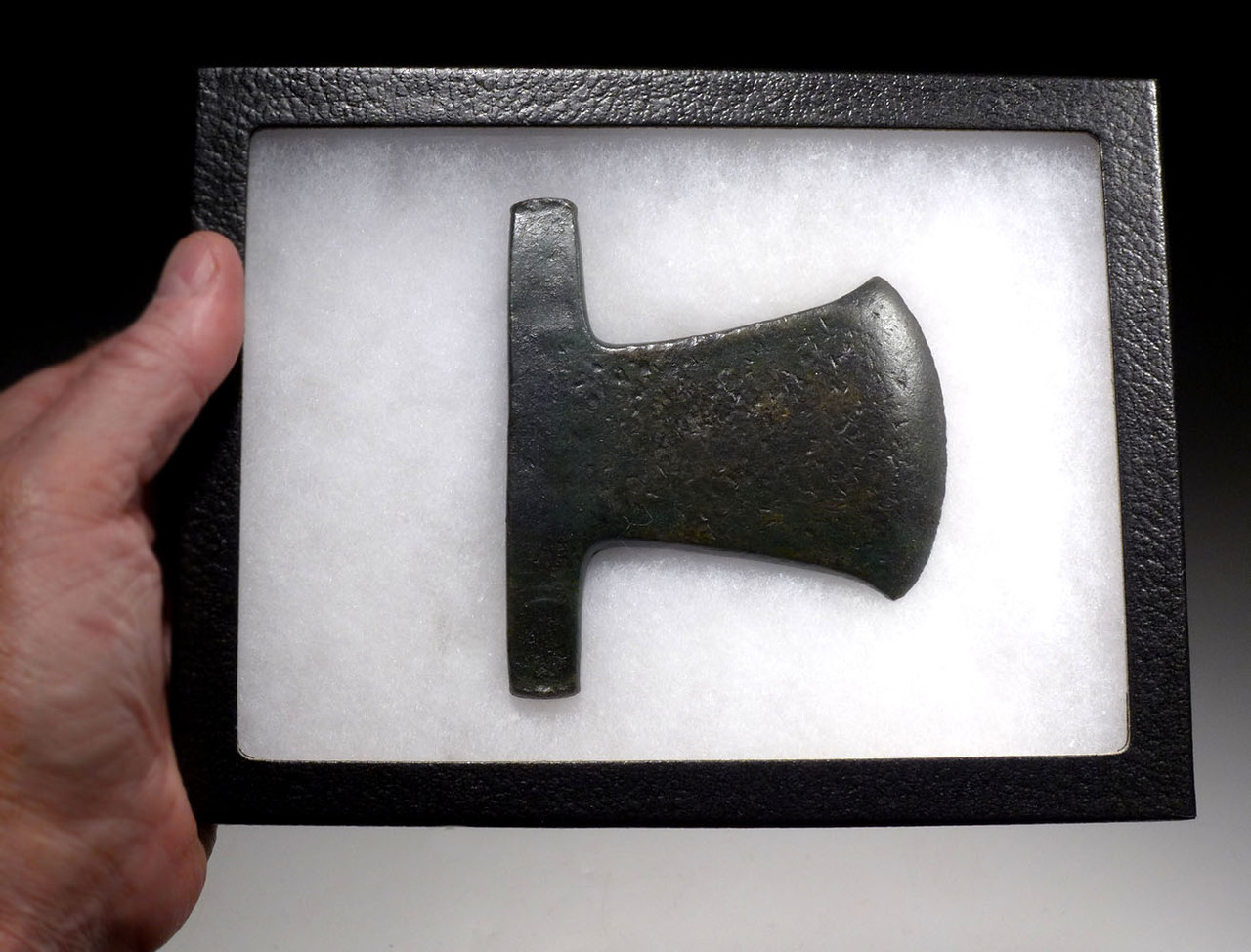Product Description
SEE MORE PRE-COLUMBIAN ARTIFACTS
With its heavy weight and substantial size and thickness, this MUSEUM-CLASS T-shaped copper axe is a classic weapon of the Inca Empire of Pre-Columbian South America. The wide perpendicular extensions on either side of the blade allowed ample length to sufficiently lash it to a wooden handle using twisted rope and tar. Such a heavy weight axe would have made this an extremely deadly weapon able to kill an enemy with a single blow to the head or break major bones with one hit. These axes were made in both, copper and stone but the copper, being so much more dense and heavy for the reduced size, made war axes of this type especially effective combat weapons. The preservation on this exquisite specimen is absolutely the finest you could ask for! This will be a highly-cherished addition to the most discriminating collectors of ancient weapons and Pre-Columbian militaria.
Despite our specializing in ancient Pre-Columbian weapons, this is the one of only three FUNCTIONAL specimens of this type, we have had in our possession. It is simply an incredible piece to hold and in every way, cannot be improved upon!
HISTORY
Starting in the beginning of the 13th century A.D. until their final defeat to the Spanish in 1572, the Inca Empire grew to become the largest empire in pre-Columbian America. Their peak was between the years 1438 and 1533 where they ruled an area as large as the historical empires of Eurasia. Their territory included Peru, southwest Ecuador, western and south central Bolivia, northwest Argentina, the majority of modern Chile, and southwest Colombia, controlled from their center in the city of Cusco in southeastern Peru.
A number of religious cults existed in the empire with regional beliefs but the Incan leadership practiced the worship of their main sun god, INTI. The Incas considered their king, the Sapa Inca, to be the "son of the sun.".
Despite the Incas building one of the largest imperial states in human history, they lacked many basic inventions. They had no wheeled vehicles, did not use animals for transportation or pulling plows, had no knowledge of iron or steel, and used no form of writing. The Inca Empire functioned largely without money or markets, instead using the barter system for the exchange of goods and services. In light of this, they were far from being a primitive society. The Incas built monumental stone architecture that to this day, still defies explanation. They also developed an extensive system of roads and highways reaching all ends of the empire. Their achievements in finely-woven textiles are legendary, and they developed innovations in farming and architecture in the extreme terrain of the Andes where most civilizations would have never dared occupy.
 US DOLLAR
US DOLLAR
 EURO
EURO
 AUSTRALIAN DOLLAR
AUSTRALIAN DOLLAR
 CANADIAN DOLLAR
CANADIAN DOLLAR
 POUND STERLING
POUND STERLING
















